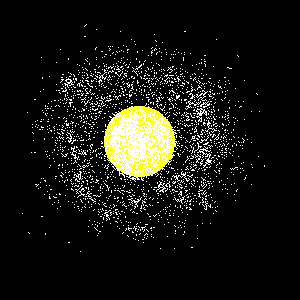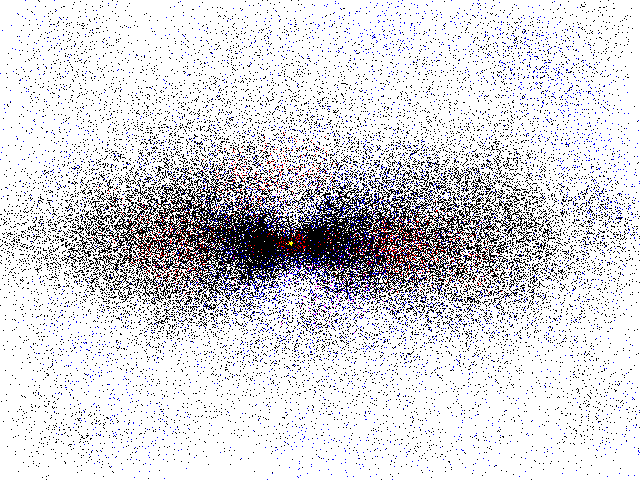Why Rings?

What would be wrong with just an unorganized swarm of snowballs?

- Each snowball would be in orbit about Saturn.
- There are a lot of snowballs.
- The orbits would cross.
- The snowballs would collide.
- End of old orbit. Start of new.
So what collection of orbits is there that doesn't have orbits crossing?
- Each orbit is a circle.
- The circles are arranged in a plane.

Is that the only possibility?
- Could have several rings with different radii, each in a different
plane.
- But Saturn is not perfectly spherical. The distance from the center to
the equator is bigger than the distance from the center to the north or
south pole. Given this slightly flattened shape then the gravitational
interaction between Saturn the rings would tend to pull them into the
plane of the equator. (This statement requires some physics analysis based
on Newton's laws of mechanics and of gravity.)

Note the similarity of this argument to the argument that the gas and dust
surrounding the proto-sun when the solar system was forming would have
collected into a disk.

This disk shape matches the present shape of the solar system.
Recall also that our galaxy is disk shaped.
ASTR 121 Home
Davison E. Soper, Institute of Theoretical Science,
University of Oregon, Eugene OR 97403 USA
soper@bovine.uoregon.edu





